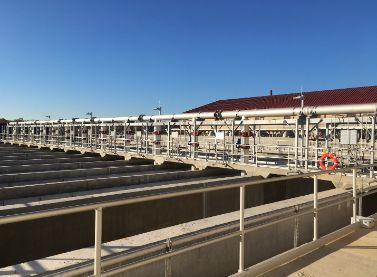The Chesapeake Bay Watershed includes hundreds of thousands of creeks, streams and rivers over 64,000 square miles in the eastern United States. While the Bay boasts unparalleled beauty, pollution from agriculture, wastewater treatment plants and urban runoff is a significant problem for the Bay and its watershed. Of the thousands of wastewater treatment plants supporting nearly 18 million people in the watershed, 470 are designated by U.S. Environmental Protection Agency as significant sources of nutrients and total suspended solids.
In late 2010, the EPA established the Chesapeake Bay Total Maximum Daily Load, a daily pollution regulation that puts restrictions on the total amount of nitrogen and phosphorus – major sources of nutrient pollution - allowed in the Bay. It is designed to ensure that all pollution control measures needed to restore the Bay and its tidal rivers are secure by 2025.
The effort to turn the tide within the Chesapeake Bay Watershed encompasses water filtration and nutrient removal efforts at over a dozen waterways. More than twenty wastewater treatment plants in the Chesapeake Bay watershed are using the DE NORA TETRA® Denite® technology to meet the stringent National Pollution Discharge Elimination System permit regulations of 3 mg/L Total Nitrogen and 0.3 mg/L Total Phosphorus. The Back River WWTP on the outskirts of Baltimore is the largest denitrification filter in the United States with an average daily flow of 185 million gallons per day (MGD). Back River WWTP is composed of fifty–two 11’-8” wide x 100’-0” long Denite filters arranged in four quadrants. The 81 MGD Patapsco WWTP, under construction, consists of thirty-four 11’-8” wide x 100’-0” long Denite filters.
Other WWTPs using DE NORA TETRA® Denite® technology in the Chesapeake Bay watershed include Arlington County WPCP, WSSC Seneca Creek WWTP, York River WWTP, Cumberland WWTP, H. L. Mooney AWTP, Lebanon WWTP, and Parkway WWTP. The City of Richmond WWTP was a pioneer in the early days of nutrient removal for the Bay, retrofitting their nozzle-bottom filters with robust TETRA underdrains in 1986 to allow for fixed-film denitrification in their tertiary filters.
Using a biologically active deep bed sand filter, the DE NORA TETRA® Denite® system converts nitrates into nitrogen gas and a supplemental carbon source is added to the filter’s influent water to help grow the denitrifying biomass. The Denite system simultaneously reduces suspended solids. While much of the wastewater’s phosphorus content is removed upstream of the filter, residual solids containing phosphorus are captured in the filter media. Additionally, phosphorus is consumed via the denitrification mechanism where it is incorporated into the biomass. The nitrogen gas is periodically purged or ‘bumped’ from the filter bed via a brief up flow backwash water – typically multiple times per day. The filtered solids and biomass are removed from the filter bed via an air and water backwash – typically once two to five days.
Three novel components make the DE NORA TETRA® Denite® system unique. First, proprietary SNAP-T® underdrains support the media and during backwash, start the distribution of air and water. The mono-media sand is the second critical component, functioning as both a support for the denitrifying bacteria and a filter media for the influent TSS and a capture mechanism for the biomass generated from the denitrification reaction. Distinct properties provide a system that can operate for decades with little or no media loss or degradation. Third, De Nora uses a proprietary algorithm called TETRAPace to control the flow of supplemental carbon to the filter. The algorithm uses a feedforward / feedback loop to optimize the carbon usage and minimize the residual TOC in the treated effluent water.


